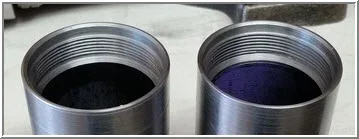I have been doing a project bike every winter for the last few years, this year it will be a Yamaha XS650SE. I bought it locally and it is a bit of a turd right now with the frame painted yellow. It took a bit of work to get it running, both carbs were in rough shape, the valves and cam-chain were badly mis-adjusted and of course the points and timing were also all wrong. A day of work and it now runs not bad with qualifies it to become a project. If the engine was toast I would have just parted it out.
My first project from quite a few years ago was a Honda CL450 which I wound up spending more money on than I should have, familiar story. Here is the finished bike.

Next year it was a DT250. Here are before and after pics.



Then came the money pit Kawasaki H1D. This bike is complete but waiting for paint.



Then my favorite, a Kawaski A7 350. It is complete except for the seat.



Here is the XS


These projects are one of the reasons I got into machine work, so I can make my own parts when required.
Cheers,
John
My first project from quite a few years ago was a Honda CL450 which I wound up spending more money on than I should have, familiar story. Here is the finished bike.

Next year it was a DT250. Here are before and after pics.



Then came the money pit Kawasaki H1D. This bike is complete but waiting for paint.



Then my favorite, a Kawaski A7 350. It is complete except for the seat.



Here is the XS


These projects are one of the reasons I got into machine work, so I can make my own parts when required.
Cheers,
John








































































